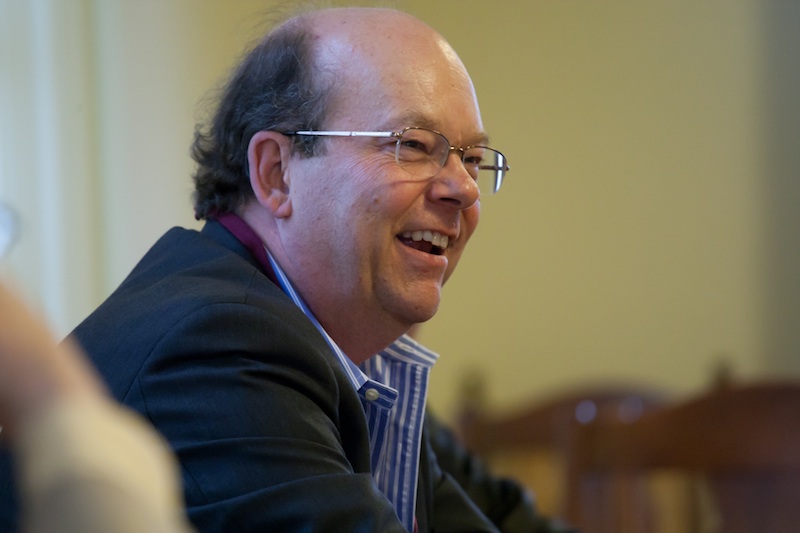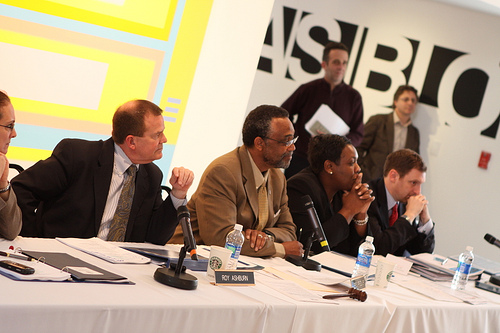We stay on top of the latest trends, opportunities and threats in our field. Our newsletter provides a digest of current arts education headlines; our Legislative Update tracks bills in the California Legislature that could impact arts programs in our schools; and, our blog offers an in depth view or opinion on current policy issues. Below are the latest news stories about our work.










 Democracy is slow—it is a world of the tortoise, not the hare. The language to describe legislative steps—“sent to Committee,” “the committee took action,” or “adopted and engrossed”—seem to imply efficiency, celerity, and progress. However, in Massachusetts, a legislative clerk must still physically carry the printed legislation down the hall and lay it on the Governor’s desk. Legislation is a cumbersome process often dismissed with the adage: “Two things you should never watch being made: sausage and the law.”
Democracy is slow—it is a world of the tortoise, not the hare. The language to describe legislative steps—“sent to Committee,” “the committee took action,” or “adopted and engrossed”—seem to imply efficiency, celerity, and progress. However, in Massachusetts, a legislative clerk must still physically carry the printed legislation down the hall and lay it on the Governor’s desk. Legislation is a cumbersome process often dismissed with the adage: “Two things you should never watch being made: sausage and the law.” In their work to uncover new, sustainable biofuels, The Boeing Company relies on the creativity of its workforce. Innovators at Boeing have identified algae as a possible biofuel that could lower carbon emissions for airplanes. That’s one reason why Sarah Murr, a Global Corporate Citizenship Community Investor for Boeing and a Board Member of the California Alliance, travelled to Sacramento to speak to lawmakers about the importance of a creative workforce - not only for companies like Boeing, but for the future of our state in the global economy.
In their work to uncover new, sustainable biofuels, The Boeing Company relies on the creativity of its workforce. Innovators at Boeing have identified algae as a possible biofuel that could lower carbon emissions for airplanes. That’s one reason why Sarah Murr, a Global Corporate Citizenship Community Investor for Boeing and a Board Member of the California Alliance, travelled to Sacramento to speak to lawmakers about the importance of a creative workforce - not only for companies like Boeing, but for the future of our state in the global economy.

 Right now, California is one of a handful of states that has resisted using federal Title 1 funds for arts education.
Right now, California is one of a handful of states that has resisted using federal Title 1 funds for arts education. According to John Eger's newest blog in the Huffington Post, "Clearly something big is happening across America" and that something is creativity. Next week, arts education stakeholders from all over California will gather in Coronado to talk about "how the arts and creative education can transform California classrooms." Next month, the California Legislative Joint Committee on the Arts will hold hearings on SB 789, legislation that will require the Governor to develop a "creativity index," which in turn would be used to measure creativity in public schools statewide. SB 789 was authored by Senator Curren Price of the 26th Senatorial District and sponsored by the California Alliance.
According to John Eger's newest blog in the Huffington Post, "Clearly something big is happening across America" and that something is creativity. Next week, arts education stakeholders from all over California will gather in Coronado to talk about "how the arts and creative education can transform California classrooms." Next month, the California Legislative Joint Committee on the Arts will hold hearings on SB 789, legislation that will require the Governor to develop a "creativity index," which in turn would be used to measure creativity in public schools statewide. SB 789 was authored by Senator Curren Price of the 26th Senatorial District and sponsored by the California Alliance.
pencils.jpg) SB 789 (Price) Moving Forward
SB 789 (Price) Moving Forward No sooner did we finish writing a handbook for our
No sooner did we finish writing a handbook for our 
